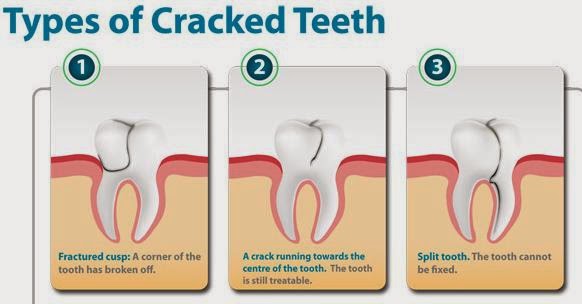How do teeth become tilted?
Teeth are normally held in position by the contact with the adjacent and opposing teeth. When this contact or occlusion is changed because of an extraction, the teeth will migrate toward the front of the mouth. Because of the forces of occlusion, they will begin to tilt and move into the space created by the extraction.
Why this is bad for you?
 Because of the change, the tooth that has moved will be more prone to having decay start between it and the one behind it. There will also be a tendency for an adverse change in the position of the bone and gum architecture, and the change is not for the better. Because of a change in the way food deflects off the tooth and different actions and forces on the root, pathologic periodontal pockets can and usually do develop. As one tooth begins to move, the other teeth around it begin to change position too. The closer they are to to the tooth next to the space, the more they move. Three, four, five, or more teeth can easily be affected.
Because of the change, the tooth that has moved will be more prone to having decay start between it and the one behind it. There will also be a tendency for an adverse change in the position of the bone and gum architecture, and the change is not for the better. Because of a change in the way food deflects off the tooth and different actions and forces on the root, pathologic periodontal pockets can and usually do develop. As one tooth begins to move, the other teeth around it begin to change position too. The closer they are to to the tooth next to the space, the more they move. Three, four, five, or more teeth can easily be affected. What are your options to fix it?
What are your options to fix it? Since this is not normally a stable or good situation, we advise that you consider having it corrected.
One tooth:
The easiest solution when there is one tooth missing and only one tooth that has moved forward and tilted is to orthodontically upright the malpositioned tooth. This can often be done in a matter of several months. Once the tooth has been moved back into position, you must stabilize it so that it will not drift back into the space again. If the tooth can be moved forward so that it is in contact with the more anterior tooth, stabilization might include some type of night retainer for several months. If there is a space anterior to the moved tooth, that is, if the tooth was moved backward in the uprighting process, you should consider replacing the missing tooth with a conventional fixed bridge, a bonded bridge, an implant, or a removable partial denture. All of these options should be considered and the choice should be made before the orthodontic treatment begins.
More than one tooth:
 |
| Conventional Bridge |

How do you prevent it?
Prevention is the best treatment. Dentists recommend saving teeth. If you have had a tooth removed, get it replaced as soon as possible, thus preventing future improper movement and misalignment. But if you are unlucky enough to have had a back tooth removed at an early age and the teeth are beginning to move, consider orthodontics to upright and reposition the teeth. If you do not, you can expect future problems with decay and your periodontal supporting tissues. Continued movement may even cause the loss of more teeth!
If you have any questions about uprighting teeth, please feel free to ask us!































